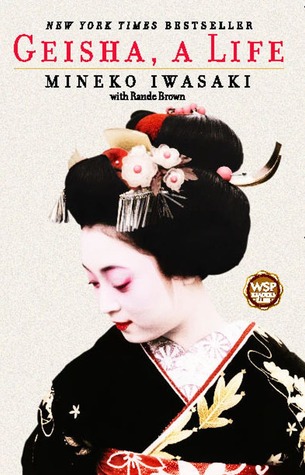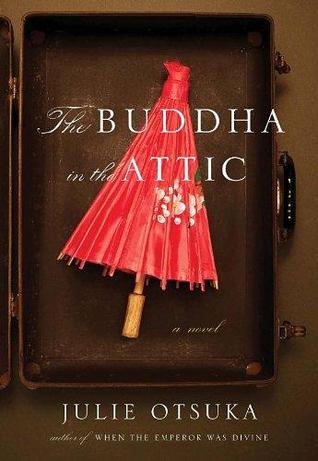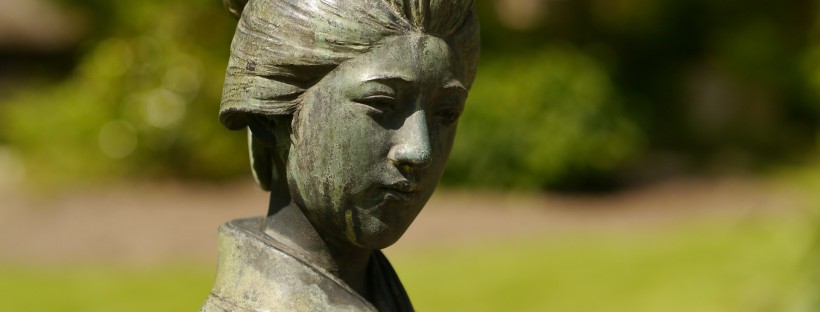One of the side-effects of being a geek is an inevitable interest in East Asian culture. Whether you got sucked in through anime, electronics, films, manga, pop music, or video games, you eventually up in the same place. Often times, however, Westerners’ awareness of China, Japan, and Korea only goes so far. While most geeks are eager to reprimand others’ ignorant comments, few have any real interest in the sociopolitical dynamics of East Asian countries; aside from the Samurai and Shaolin, Asian history gets ignored in favor of Herodotean generalizations about male-dominated societies and femicide.
Reasons for the persistence of these cultural stereotypes are abundant. Asian-American Studies programs, while plentiful in California and Hawaii, are overlooked in areas without large immigrant populations. Additionally, many prominent novels purporting to present authentic views of East Asian life are terribly inauthentic in voice; Arthur Golden’s Memoirs of a Geisha, which we’ll discuss later, is a serious offender.
Luckily for us, the American market broadened in recent years to include Asian fiction in translation. Following the widespread success of writers like Maxine Hong Kingston and Amy Tan, novels by Asian-American authors are primed for a publishing boom.
5 Authentic Tales by Asian Women
Mineko Iwasaki – Geisha, a Life
 Known in the UK as Geisha of Gion, this memoir provides an unflinching look into the life of one of Japan’s most famous entertainers. From the circumstances that brought her into the okiya, to her decision to abandon the career she pursued for more than two decades, Iwasaki’s story progresses with the same measured grace expected of her profession.
Known in the UK as Geisha of Gion, this memoir provides an unflinching look into the life of one of Japan’s most famous entertainers. From the circumstances that brought her into the okiya, to her decision to abandon the career she pursued for more than two decades, Iwasaki’s story progresses with the same measured grace expected of her profession.
Interestingly enough, if not for Memoirs of a Geisha, this autobiography would probably have never been published. As part of his research for Memoirs, Golden interviewed Iwasaki and other geisha, under the pretense that he would not reveal their involvement with his novel. When Memoirs was published, however, its author included the famous geisha prominently in his final acknowledgements, stating that he was “indebted to [Iwasaki] above all others.” If this wasn’t enough, despite his claims that his informant “corrected every misconception I had about the life of a geisha,” Golden included details—such as the practice of mizuage—that Iwasaki has roundly denounced as myth.
Almost five years after Memoirs of a Geisha was published, after receiving death threats for her involvement with his novel, Iwasaki sued Golden for breach of contract in 2001. Published the next year, Geisha, a Life combats Golden’s sensationalized account with its honesty and authenticity.
Lensey Namioka – Ties that Bind, Ties that Break
 Ties that Bind, Ties that Break tells the story of Ailin, whose refusal to undergo foot binding at an early age impacts her entire life. By exploring autonomy in a culture that largely denies women control over their own bodies, Namioka generates a kind of universal appeal in her novel. Even in the United States today, women face untold challenges regarding their freedom, regardless of whether they choose to submit to the status quo or to rebel against it.
Ties that Bind, Ties that Break tells the story of Ailin, whose refusal to undergo foot binding at an early age impacts her entire life. By exploring autonomy in a culture that largely denies women control over their own bodies, Namioka generates a kind of universal appeal in her novel. Even in the United States today, women face untold challenges regarding their freedom, regardless of whether they choose to submit to the status quo or to rebel against it.
In a novel like this, one would typically expect to find a protagonist who is victimized by society, which makes Ailin’s story even more foreign to Western audiences. While it is important to recognize that submission to society expectations can be a vehicle for empowerment, because this is so often the route taken when writing female Asian characters, Namioka’s decision to portray her heroine as self-determined is a refreshing one. Readers looking for stories featuring historical womanism are certain to enjoy Ties.
Julie Otsuka – The Buddha in the Attic
 The follow-up to Otsuka’s 2002 debut, When the Emperor Was Divine, The Buddha in the Attic follows a chorus of unnamed Japanese mail-order brides as they learn to navigate American immigrant life. Spanning the first half of the 20th century, Buddha weaves in-between general and individual details of the women’s lives, beginning with their journey across the Pacific to California. Later, as the immigrants settle into life in America, the short novel shifts focus to their interpersonal relationships with husbands, children, and White neighbors.
The follow-up to Otsuka’s 2002 debut, When the Emperor Was Divine, The Buddha in the Attic follows a chorus of unnamed Japanese mail-order brides as they learn to navigate American immigrant life. Spanning the first half of the 20th century, Buddha weaves in-between general and individual details of the women’s lives, beginning with their journey across the Pacific to California. Later, as the immigrants settle into life in America, the short novel shifts focus to their interpersonal relationships with husbands, children, and White neighbors.
One of the best things about Otsuka as a writer is her ability to craft an exquisitely detailed story within a small frame; according to Goodreads, When the Emperor Was Divine and Buddha both clock in at 144 pages each. Her novels unfold like prose poetry, her unique meter keeping the pace by hastening and slowing at precise moments in the narrative.
If you’re interested in herstory, immigrant voices, or Japanese-American history, clear your schedule for the hour or two it takes to consume this little gem.
Lisa See – Snow Flower and the Secret Fan
 Drawing heavily on her Chinese-American heritage for inspiration, See is the author of nine novels, including two NY Times bestsellers. Of all the books listed here, this is the only title I have not personally read. I do, however, have it on good authority—both from a close friend and from Internet reviews—that Snow Flower and the Secret Fan is excellent.
Drawing heavily on her Chinese-American heritage for inspiration, See is the author of nine novels, including two NY Times bestsellers. Of all the books listed here, this is the only title I have not personally read. I do, however, have it on good authority—both from a close friend and from Internet reviews—that Snow Flower and the Secret Fan is excellent.
See’s fourth novel chronicles a lifelong friendship between two women in 19th century China. Focusing its lens on the private politics of women’s lives, Snow Flower explores the practices of foot binding and nu shu: a secret form of writing illegible to men.
The novel does not shy away from graphic depictions of anti-woman language and violence; readers are constantly reminded—as are Snow Flower‘s heroines—of how worthless women are in pre-Mao China. While this may be a turn off for some book lovers, it doesn’t seem to have cost See any fans or critical praise. What’s more, the novel retains an authentic voice, despite See’s being far removed—both geographically and in lifestyle—from her ancestry.
Adeline Yen Mah – Falling Leaves: the Memoir of an Unwanted Chinese Daughter
This is, in my opinion, the most poignant and disturbing book on this list. While the other four depict cruelties heaped on women by society at large, none of them recount a tale of abuse and mistreatment at the hands of family. Yen Mah’s account of growing up in a family that thought she was cursed, with a stepmother who turned her into a servant, is as gripping as any dystopian novel.
Unique among this selection of books, Falling Leaves is also available in a revised format, edited for children, called Chinese Cinderella. For the juvenile version of her story, Yen Mah also penned two fictional sequels: Chinese Cinderella and the Secret Dragon Society and Along the River: a Chinese Cinderella Novel. Parents and teachers looking to curate Asian-American novels for elementary audiences should be sure to look into this series.
Do you know of any great Korean-American novels or memoirs? Are there any books you would add to, or scrub from, this list? Let me know in the comments!

